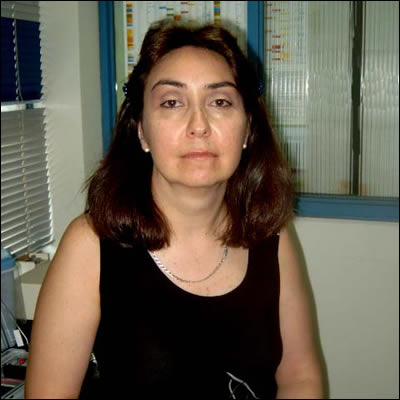Cecilia V. Rojas, Ph.D.

- Title
- Associate Professor
- Department
- Department of Biochemistry
- Institution
- University of Chile
- Address
- Casilla 138-11
- City
- Santiago
- Country
- Chile
- [email protected]
- Research field
- Cell Biology; Metabolism
- Award year
- 1991
- Country of origin
- Chile
- Mentor name
- Eric Hoffman, Ph.D
Research
Obesity is a public health problem worldwide that it is beginning to replace undernutrition and infectious diseases as the most significant contributor to life threatening pathologies in many developing countries Obesity is a complex disorder in which the excess of body fat (mainly visceral adipose tissue) appears to play a key role. Fat cells store the excess food intake in the form of a cytoplasmic triglyceride droplet, which may increase the adipocyte size more than a thousand fold. Adipocytes serve not only as lipid deposits but also as secretory/endocrine cells that have a profound effect on whole body metabolism. Emerging data indicate that several adipocyte functions are influenced by cell size, leading to suggest that abnormal functioning of adipose tissue in obese subjects may partly arise from a relative increase in the number of hypertrophic adipocytes. The increase in adipose tissue mass that underlies obesity may result from changes in adipocyte size and/or number. However, little is still known regarding adipocyte progenitor cell proliferation or the control of the formation of new fat cells in human adipose tissue. Angiotensin II is an octapeptide (known to regulate body fluid homeostasis and blood pressure) primarily produced by the liver that is also generated in the adipose tissue and its plasma concentration is high in obese subjects. We are currently investigating the role of angiotensin II in the regulation of the formation of new adipocytes from progenitor cells isolated from human omental fat. This line of research is aimed to understanding the function of local angiotensin II in the determination of adipose cellularity in lean and obese human subjects. Adipocytes show different intracellular cholesterol distribution according to cell size. Very large adipocytes have reduced cholesterol in the plasma membrane and increased cholesterol concentration in the lipid droplet as compared to small fat cells. Given the crucial role of plasma membrane cholesterol and cholesterol-rich domains in cell signal transduction, we are investigating the consequences of intracellular cholesterol redistribution on lipid metabolism (lipogenesis/lipolysis) and on the secretory function of adipocytes. We have focused our attention on cellular signaling mediated by the calcium sensing receptor (CaSR), that we recently described in human adipocytes
Fellow Keywords
1991 Search Pew Fellows
- Rogelio O. Arellano, Ph.D.
- Carlos O. Arregui, Ph.D.
- Monika V. de Arruda, Ph.D.
- Angela K. Cruz, Ph.D.
- Ana Belén Elgoyhen, Ph.D.
- Manuel A. Kukuljan, Ph.D.
- Antonio Carlos Oliveira Bruno, Ph.D.
- Ariel Alejandro Orellana Lopez, Ph.D.
- Eduardo A. Perozo, Ph.D.
- Mauricio M. Rodrigues, Ph.D.
- Cecilia V. Rojas, Ph.D.